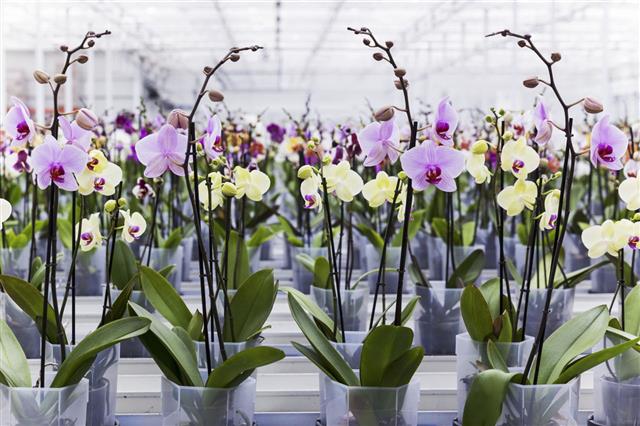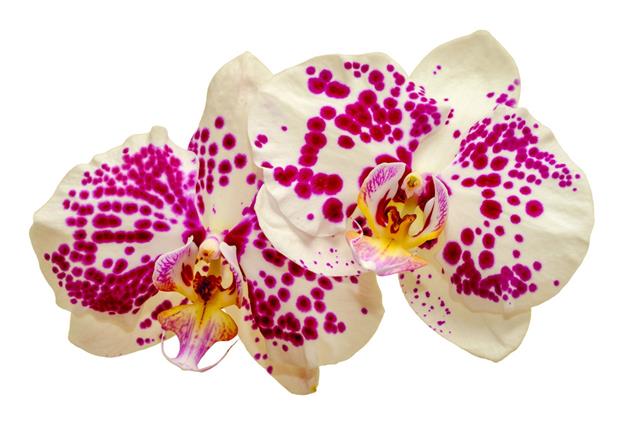
Phalaenopsis orchids also known as moth orchid and is one of the most common orchids that is grown by gardeners. For orchids to bloom and thrive, you should be aware of phalaenopsis orchid problems to avoid. Here we are going to discuss some of the common problems that are seen in phalaenopsis orchids.
Beautiful and ethereal, orchids are one of the most popular and revered flowers. The beauty of orchids lies in its not so perfect symmetry, which makes them mesmerizing and alluring. Orchid are of two types, terrestrial and epiphytic. Terrestrial orchids grow on the ground and epiphytic orchids grow on tree trunks and limbs with their roots visible. Phalaenopsis orchids fall under the latter category. Although orchids have got a reputation as difficult to grow, phalaenopsis orchids are relatively hassle free to grow.
If you are a novice gardener and want to grow orchids, then phalaenopsis orchids are a good species to start with. They are one of the hardiest of orchid species and you can find moth orchids in a variety of striking colors from purple, pink, yellow to red and orange. The best thing about phalaenopsis orchids is that with proper care it can also be grown as a houseplant. However like any other plant, moth orchids too may fall prey to some common diseases and infestation of insects. Here we will discuss some of the common phalaenopsis orchid problems.
Common Problems Affecting Phalaenopsis Orchids
As mentioned earlier, phalaenopsis orchids might develop some problems like insect infestation, leaf rot and other diseases. You will need to identify these problems and take care of them if you want the orchids to thrive and bloom.
Root Rot
One of the most common phalaenopsis orchid problem that home growers encounter is rotting of the roots. Root rotting if not checked will cause the orchid plant to die. One of the main reasons for rotting roots is over watering. Although phalaenopsis orchid is a tropical plant, it needs moderate sunlight and water to grow. A well drained pot is ideal for growing orchid plant. You should also water only in the morning, making sure that the excess water in the pot drains out through the bottom of the pot. Soggy flower pots, due to excessive watering will make it difficult for the roots of the orchid plant to get adequate oxygen. This will kill the plant in a few weeks.
Bacterial Leaf Rot
Another problem that you may encounter while growing a phalaenopsis orchid is bacterial leaf rot. In bacterial leaf rotting, the leaves of the orchid plant have brown spots that is soft and mushy. This generally spreads to the other leaves and pseudobulbs. If it is not checked, the plant ill die. Bacterial leaf rotting usually occurs due to low temperature and high humidity. To tackle this problem, you need to cut out the portion of the stem and leaves where bacterial rot is seen. Apply some antibacterial to the affected area.
Crown Rot
Discoloration of the leaves at the base of the plant might signal crown rot. If this problem is not tackled quickly, the orchid plant will die in a matter of days. Crown rotting is caused due to standing water near the base of the plant and inadequate circulation of air. Cut off the rotting leaves and stem and spray the affected area with fungicide. Sometimes you might notice browning tips on leaves of the plant. This signals that you are using too much fertilizer, so you will need to cut down on it.
Mites and Mealy Bugs
Sometimes large silvery white areas are seen on the underside of the leaves of the moth orchid, this is caused by an infestation of spider mites. Using neem oil spray will get rid of the mites. Mealy bugs can also cause a lot of problems in orchids plant and they usually leaves a sooty mold like substance in the crevices on the plant. Spraying the plant with a good insecticide usually takes care of such problems.
With proper phalaenopsis orchid care and maintenance and tackling of any problems promptly, you can enjoy its beautiful blooms. Phalaenopsis orchids are relatively hardy orchids and all you need to do is give it adequate light and water to help it thrive.


